For those who are ready to up their game, we take some of the mystery out of what to look for when shopping for an ergonomic, next-gen keyboard.
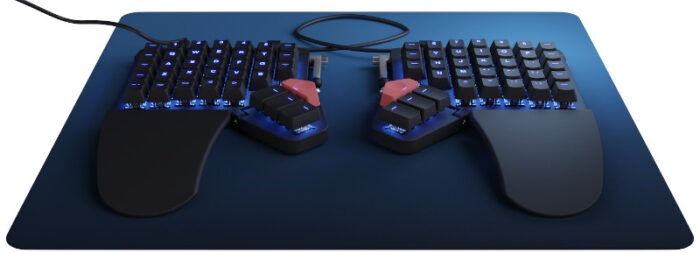
A half century of personal computers has seen massive changes in hardware. Motherboards, drives, GPUs — almost everything has become faster and more efficient. All, that is, except the keyboard. Today, the majority of users continue to use keyboards almost identical to the cheap modified typewriter-style keyboards with which the personal computer began.
In the last decade, however, change has began to come. Today, a growing number of manufacturers are producing what are called ergonomic or next-generation keyboards. Retailing for $200-$700 and running on open firmware, such keyboards not only give users total control over their typing, but also relief from repetitive stress injuries. Slowly, this new hardware is catching on.
The reasons for the change are numerous. To start with, an aging population is spending more hours on the computer. For many, RSI is a growing problem. Just as importantly, the rise of free and open source software has created communities that demand the ability to customize their laptops and work stations. With basic commands that date back to the early days of Unix being currently rewritten for modern users, the idea of a similar control over hardware is starting to seem only natural. In that respect, next-generation keyboards are similar to technologies like coreboot, which replaces BIOS with a leaner, faster alternative.
Alternative keyboards are not new. Some of the features that are now becoming commonplace have been around for several decades. So have do-it-yourself keyboards for hobbyists. However, it is only in the last decade or so that advanced keyboards began to edge towards the mainstream.
Helping to spark the shift was the 2014 expiration of Cherry AG’s patent on MX mechanical keyswitches, which make it possible for each key to be individually customized and replaced as necessary. Within a few years, at least half a dozen companies like Gateron and Kailh sprang up, offering their own innovations. Another harbinger was the introduction around 2020 of hot-swappable switches that can be replaced without soldering. The result is that, with less than hour’s work, anybody can completely change how a keyboard works.
An added factor has been the growing popularity of gaming. Companies like Razer quickly began to offer mechanical keyboards on which a few keys were customizable. While such keyboards fall short of a modern next-generation keyboard, they are significant improvements over the so-called ergonomic keyboards sold by companies like Logitech and Microsoft, for which “ergonomic” is barely more than a buzzword. In effect, gamer keyboards are an intermediary step towards next-generation keyboards. Even today, they are a relatively inexpensive way to try some of the features, often selling for around $80-200.
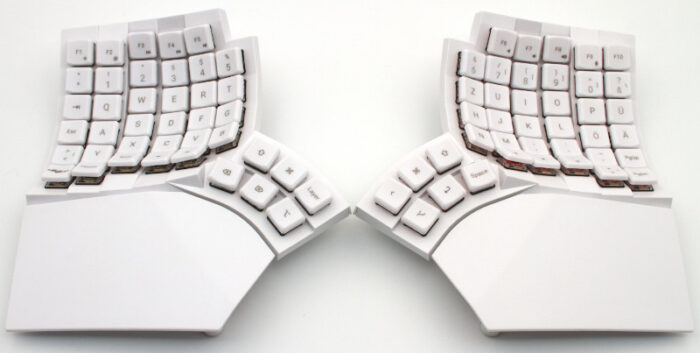
The Details of Ergonomics
Keyboard ergonomics center around several basic goals: keeping users’ hands on the keyboard, minimizing finger movement, keeping hands and arms in an unstressed position as possible, and reducing the number of keystrokes for routine actions. As a side effect of these goals, next-generation keyboards offer almost unlimited customization of both hardware and software.
More specifically, next-generation keyboards have most, if not all of these features:
- Hot-swappable mechanical keyswitches. The differences between the force to activate a key and the distances keys travel before they can be used again are small, but the differences can add up over hours of work. Lighter, short travel keyswitches that are ideal for gaming and typists also are less of a strain on fingers.
- Layers, each with separate key assignments, like the availability of upper case letters and special characters when the Shift key is pressed. Many modern boards support ten or more layers, including some dedicated to a particular application or game.
- Sculpted keys which allow fingers to move more easily from key to key. Touch-typists in particular benefit from this feature.
- Keys arranged in vertical columns, instead of staggered columns, which reduce the distance fingers must travel between keys.
- Split keyboard halves, which are typically placed shoulder-width apart, a more natural and less stressful position.
- Tenting, or the angling of keyboard halves downward from where they meet. Tenting reduces stress on the arms and wrists.
- Tilting, or the angling of each half away from a typist. Tilting also reduces arm and wrist strain.
- Software for customizing keys, including macros. A single key can be set to accomplish what longer key combinations can do or to do several different things depending on how they are pressed.
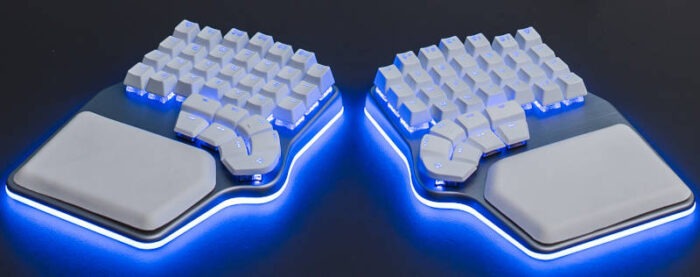
These changes can take anywhere from a few hours to a few weeks for average users to adjust to. Key customization especially can take a long time to choose, simply because there are so many options. However, the relief from stress makes the transition worth the effort.
Major Next-Generation Keyboards
New manufacturers of next-generation keyboards seem to be appearing every month. Here are some of the most prominent:
- ZSA Technologies began by selling a ready-made version of the Ergodox board favored by hobbyists. Its portable boards, the Moonlander and Voyager, are the benchmark against which other ergonomic keyboards are measured, and ZSA continues to develop the firmware, so users can look forward to regular new features. While ZSA rejects Bluetooth as too unstable, its hardware solutions are simple yet effective, and look like something that should be on the bridge of a starship.
- The Ultimate Hacking Keyboard stands out for its array of modules, including a trackball, touchpad, and key cluster.
- Keyboardio mounts its keyboards on hardwoods like maple, walnut, and cherry. Its hardware rivals ZSA’s, and its Kaleidescope firmware has many enhancements over the more popular QMK. Its main disadvantage is a lack of easily locatable documentation.
- MoErgo’s Glove80 positions keys as though they are on the inside of a bowl. This arrangement makes for an ergonomic advantage, but at the cost of not having hot swapable key switches.
- Dygma makes solid keyboards, but tends to be over-engineered with over-complicated designs. It aims largely at the gamer market in both its Defy and Raise product lines. Its site is a useful source of information about modern keyboards.
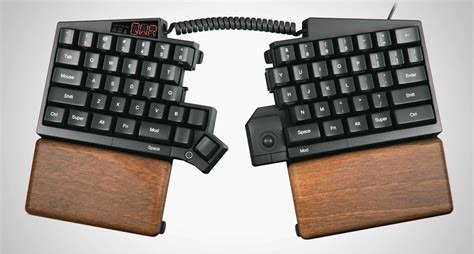
Compared to the standard $20-$40 throwaway keyboards, the products of such companies may seem to have outrageous prices. Yet hardcore gamers happily shell out similar amounts for high-end graphics cards, and the shelf life of the best next-generation keyboards can be measured in years. The most common failure is a single keyswitch, which can be replaced in a few minutes.
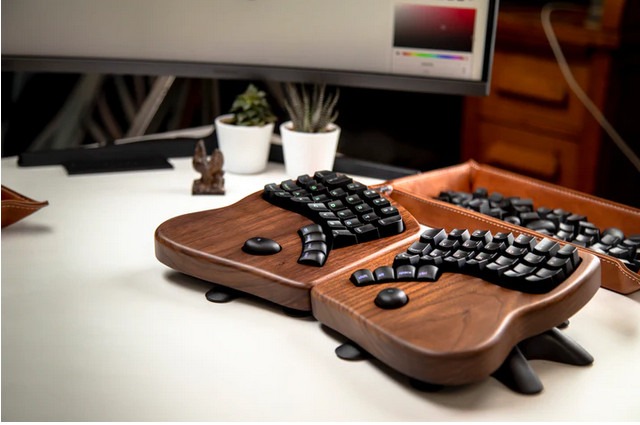
The latter is important, since virtually all manufacturers strongly support the right to repair. Dygma, for instance, has released videos about how to unassemble its products, while Keyboardio states that tinkering does not void its warranty, and its products ship with a multi-head screwdriver to encourage experimentation. The fact is not often mentioned, but next-generation keyboards are a niche where open hardware is the norm. In the end, the benefits to users more than justify the price.
Bruce Byfield has been involved in FOSS since 1999. He has published more than 2000 articles, and is the writer of “Designing with LibreOffice,” which is available as a free download here.


